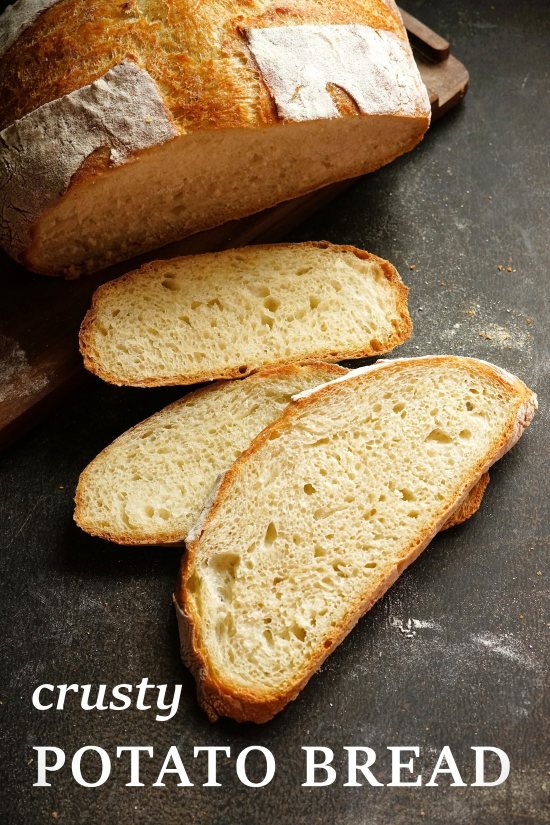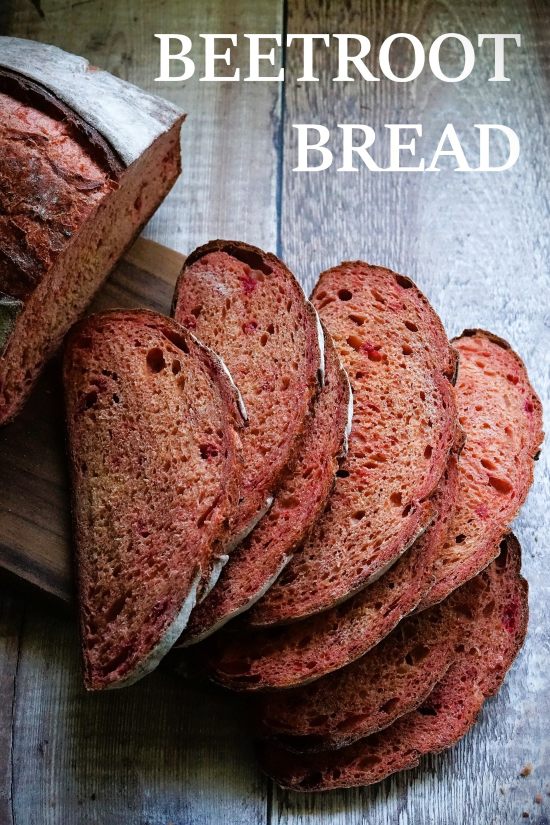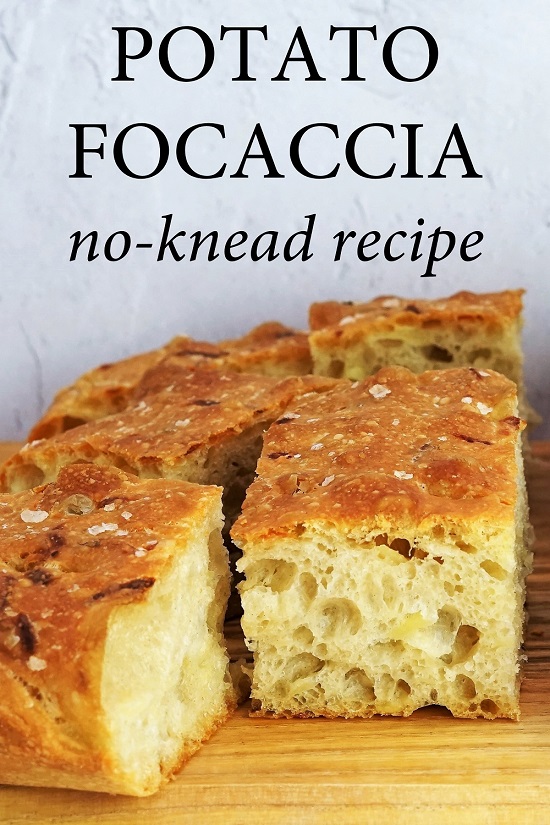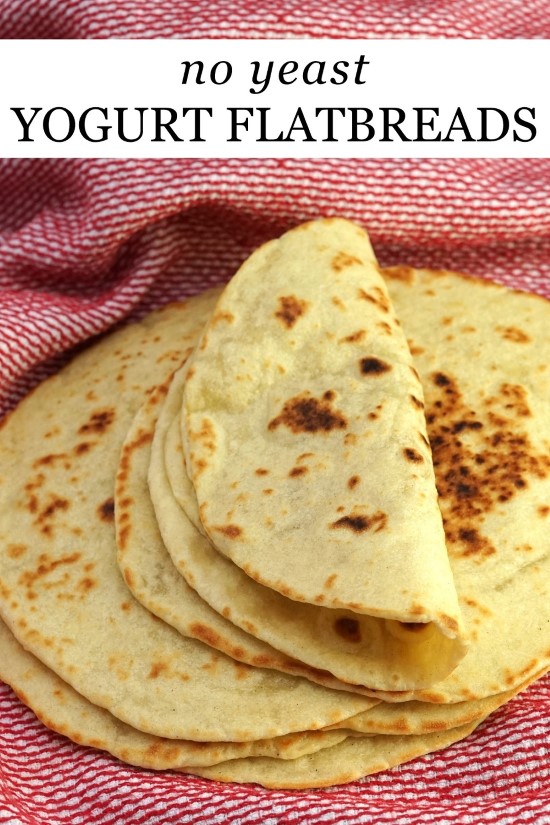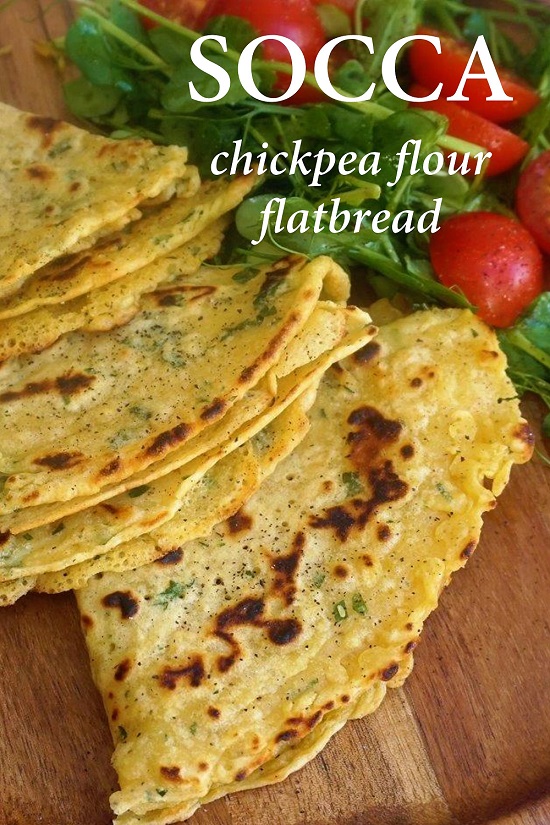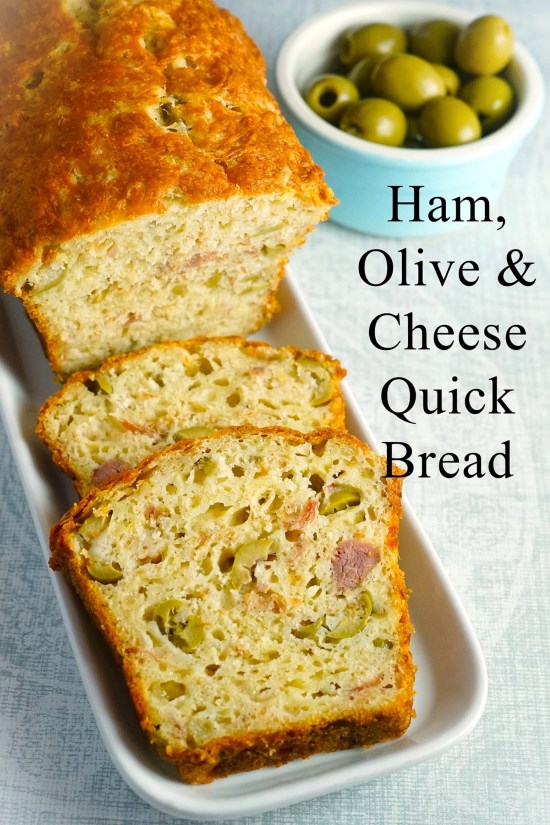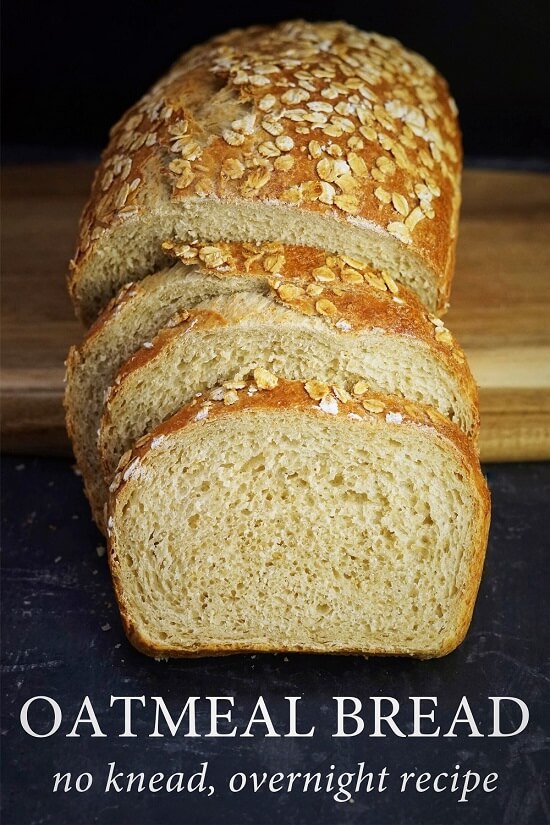Turkish Pide Flatbread (Ramazan Pidesi)
This special Turkish pide flatbread, known as Ramazan Pidesi, is beautifully soft, light, and has an open textured crumb. It also looks stunning.
With a distinctive diamond pattern and shiny glaze speckled with black and white seeds, you might think this focaccia-like bread is difficult. But with an easy, no-knead dough, you’ll want to make it again and again to accompany meze dishes like hummus, to eat alongside soups, stews and meats, or even use it for sensational sandwiches.
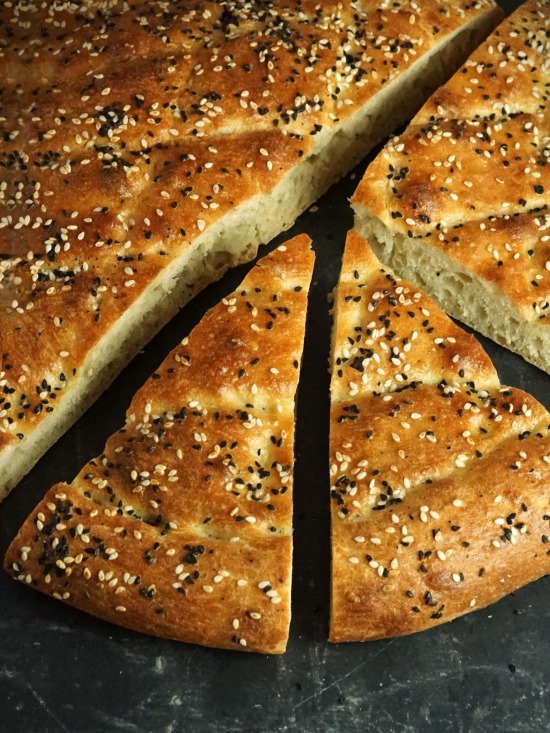
Disclosure: this post may contain affiliate links. If you buy via my links, I may earn a small commission at no extra cost to you.
Jump to Recipe
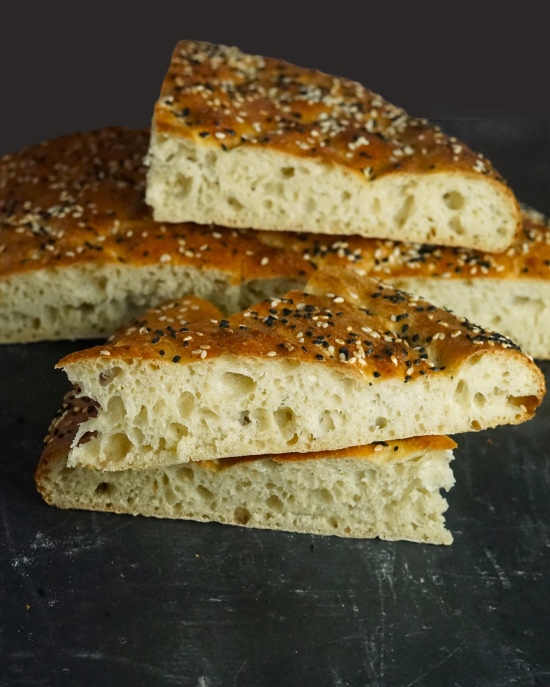
I’d hazard a guess that most foodies who aren’t Turkish, when we hear the word pide (apparently pronounced pee-deh), think of a boat-shaped, pizza-like bread wrapped around a filling. And very good they are too. Below left is a delicious street market pide I enjoyed with feta, onions and nigella seeds. On the right is my homemade spicy beef pide.

But I’ve learned that pide can also mean a focaccia-like flatbread. I discovered this after eating great bread to accompany meze dishes at a (sadly short-lived) Turkish restaurant. My resulting research into Turkish breads led me not just to flatbread pide, but to the rather special version called Ramazan Pidesi.
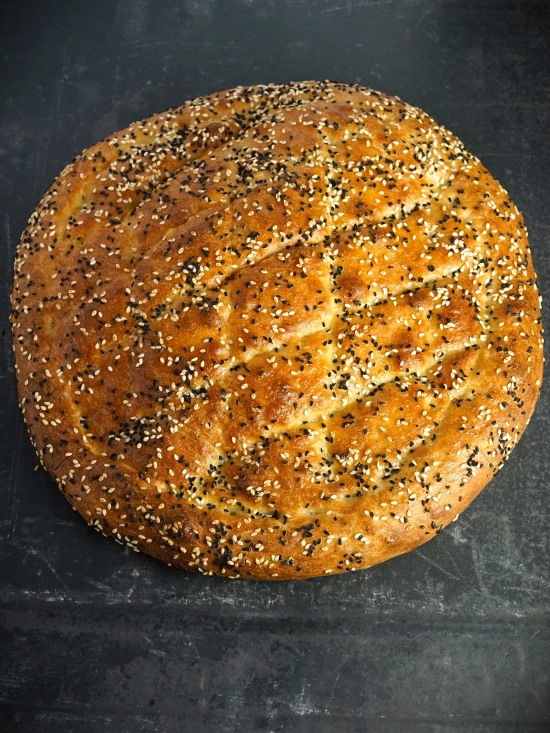
RAMAZAN PIDESI
For every day eating, Turkish pide flatbread might be a plain, round yeasted bread. But Ramazan Pidesi is particularly associated with the month of Ramadan (often called Ramazan/Ramzan in non-Arabic countries such as Turkey). With its glossy sheen, diamond pattern, sprinkling of black and white seeds, it must be a welcome sight at the evening meal that ends a day of fasting.
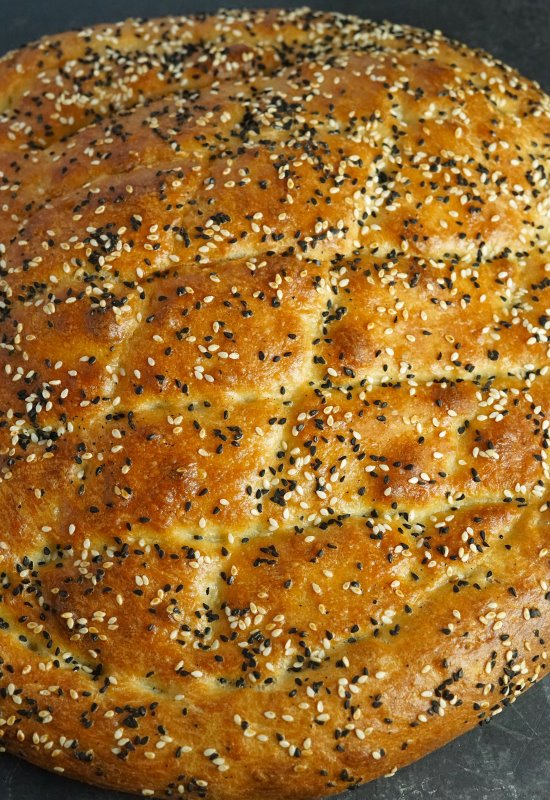
Despite appearances though, this bread really isn’t difficult.
Like the more familiar Italian focaccia, the wettish dough for Ramazan Pidesi (or Ramadan pide) isn’t normally kneaded. Just a quick stretch and fold is all that’s required. The result is a soft and light bread with an open-textured interior.
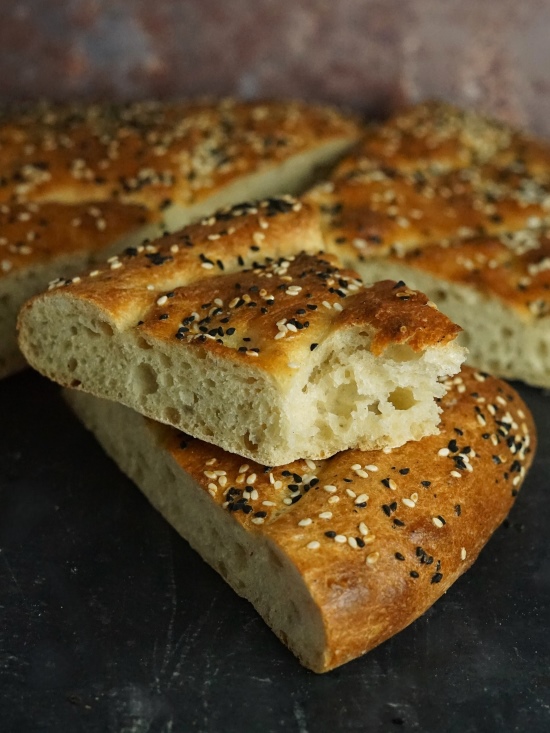
The dough itself is a simple one with just strong white bread flour, salt, instant dry yeast, sugar, water, plus a little olive oil for greasing. What makes this pide distinct in both appearance and flavour though are the final steps just before it goes in the oven.
First, it’s brushed with an egg-based wash that will create a glossy sheen. Then, using just the tips of your fingers, you make a series of indents that form an attractive pattern. Finally, it’s sprinkled with white sesame seeds and intriguingly flavoured, slightly smoky nigella seeds.
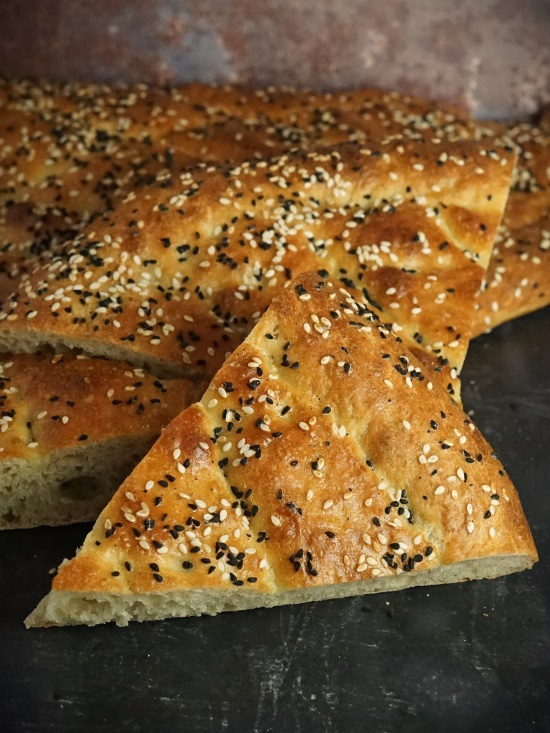
You’ll find ingredient amounts and full instructions to make one large pide in the recipe card at the end. However, I recommend you read the whole of this blog post first for extra tips and step-by-step images.
EASY TURKISH PIDE FLATBREAD
To make the dough, all you do is put the bread flour, salt, instant dried yeast, and sugar in a large bowl. Then stir in enough warm water to great a wettish, shaggy, but not sloppy dough. As different flours absorb different amounts of liquid, it’s not possible to be exact about how much water to add. So, start with just 200 ml and gradually stir in more as needed.
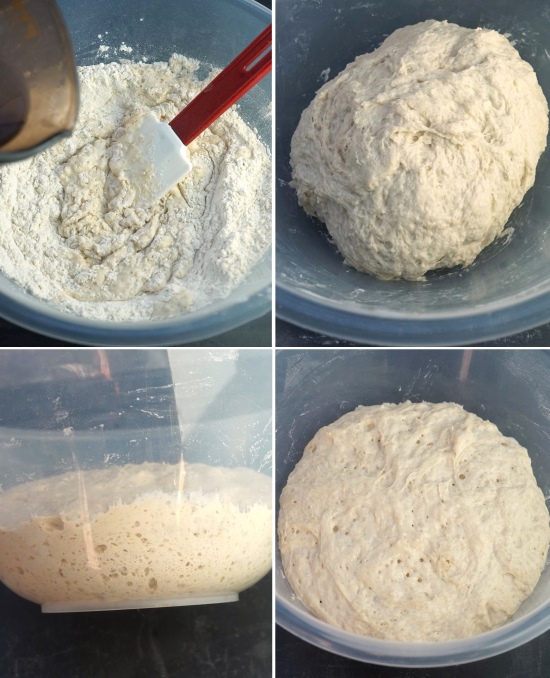
Now cover the bowl and leave in a warm place until bubbly and roughly doubled in size. Depending on temperature, this should take 45 – 90 minutes. Alternatively, you could make the dough with cold water and leave overnight. I’ve given instructions for this in the Notes to the recipe card.
When the dough has risen, we do a quick series of stretches and folds. It takes literally seconds but does help to give structure to the finished bread. All you do, with slightly wet hands and the dough still in the bowl, is first lift up the top edge (I think of it as ‘north’) then fold it into the middle. Now do the same with the ‘east’, ‘south’ and ‘west’ sides.
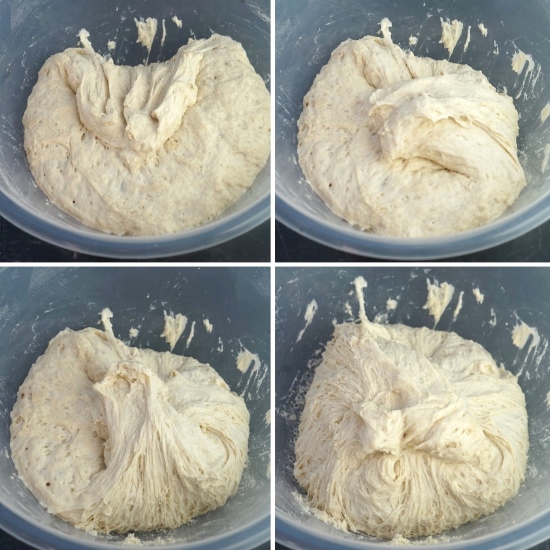
Repeating the process twice more will give you a plump piece of dough, albeit still rather shaggy looking.
SHAPING THE DOUGH
We shape the dough on a large piece of baking paper to prevent sticking. I also put the paper on a large board or tray as this helps when transferring to the oven.
Scatter extra flour over the paper, then scrape the dough onto it. Now rest it for around 5 minutes, covered with the upturned bowl to stop it drying out. This resting period will relax the dough so it’s less likely to shrink back when you shape it.
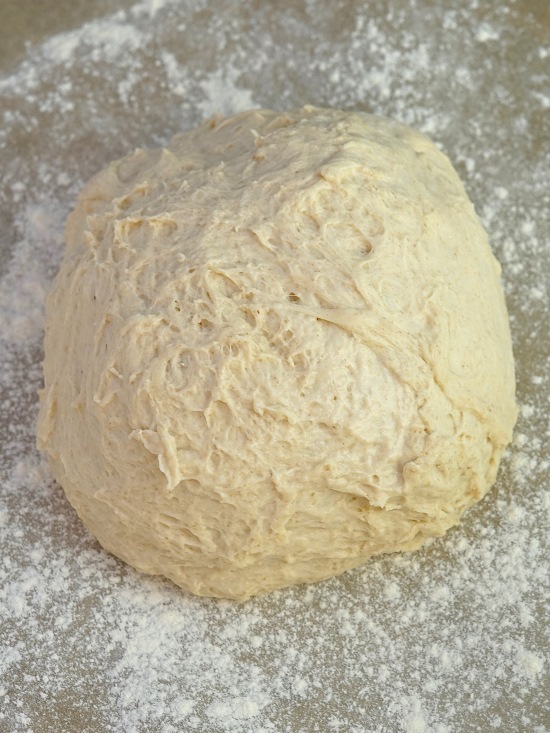
As the dough will be quite sticky, grease your fingers by dipping in some olive oil then rubbing over the top of it. Now start to pat the dough into a circle 28 – 30 cm in diameter. If it springs back a lot, leave it to relax a little longer then try again.
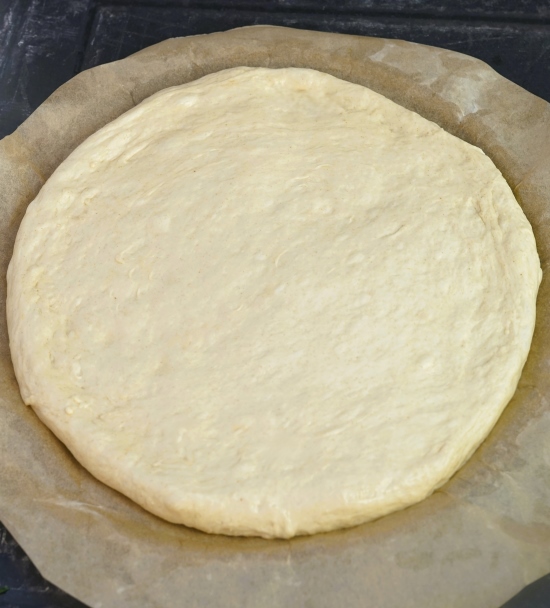
When the dough is the correct size, make sure it has a good coating of oil then cover with a piece of cling film. The dough then needs a second proof for approximately 30 – 45 minutes. Exactly how long will depend on how warm the room is. The best way to test if it’s ready is to push a finger into the dough. If it leaves an indent rather than immediately springing back, it’s ready. If not, leave for longer.
During the second proof you should preheat your oven to the temperature shown in the recipe card. I recommend preheating your baking tray too (I use a 30 cm round pizza tray) so that the dough immediately gets good bottom heat to help it rise.
ADDING THE GLAZE & PATTERN
I’ve seen a number of different glazes in recipes for Ramazan Pidesi. Everything from just olive oil, a mixture of egg yolk-water-melted butter, to cooked flour-water-egg-yogurt. Apart from giving an attractive appearance, you really do need something for the seeds to stick to. After experimenting, I found I prefer whole egg whisked with a little thick yogurt.
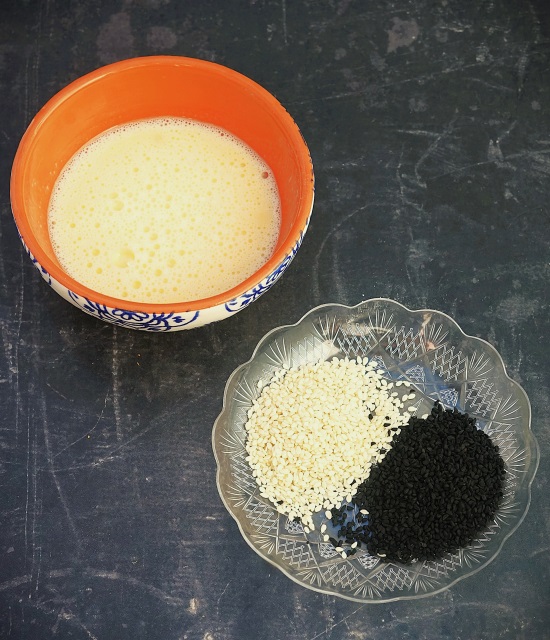
After you’ve brushed over a good layer, you can add the distinctive decoration. Use the tips of two or three fingers to make indents in a circle all around the dough. Make it a few centimetres in from the edge and press all the way down to the bottom of the dough without going through it.
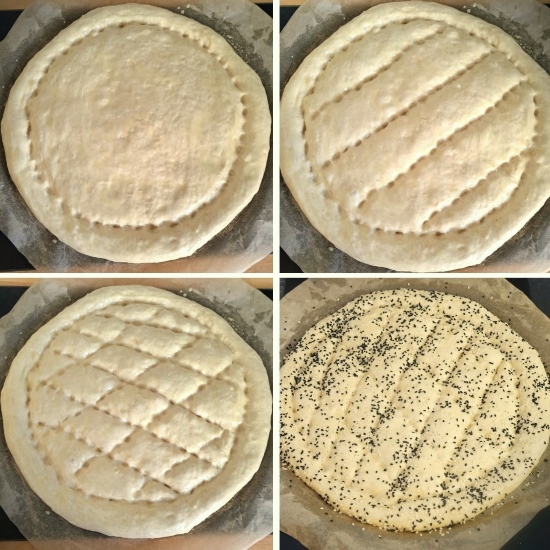
Now make a series of lines from one side of the circle to the other. Give the tray or board your paper is sitting a quarter turn before making another series of lines crossing the first. You should now have a diamond pattern. Finally, sprinkle over the sesame and nigella seeds.
BAKING
To bake, remove the preheated baking tray from the oven and carefully slide the bread, still on its paper, onto it. Put in the oven and bake for 15 minutes.
After 15 minutes, we reduce the oven temperature, discard the tray and paper, then return the bread to the oven, placing it directly on the oven shelf. Continue to bake until it’s cooked all the way through. Ovens do vary so this could take anything from 5 to 10 minutes. When done, it should sound hollow if you tap it underneath.
Once out of the oven and on a cooling rack, I recommend covering the bread with a cloth/ tea towel for a soft exterior.
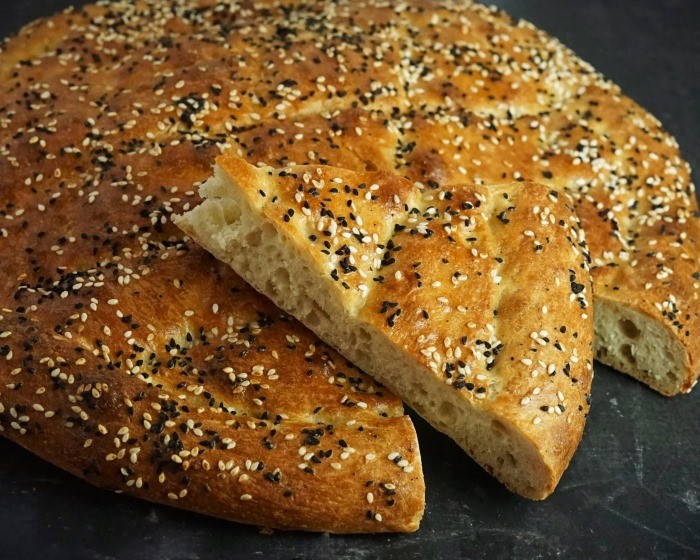
The bread is best eaten while it’s very fresh: cooled until just warm is lovely. But if you’re not having it straight away it can be reheated and refreshed in a microwave, air fryer, or sprinkled with water and put in a moderate oven. Ramazan Pidesi also freezes well. I cut it into generous portions first so I can just defrost as much as I need.
SERVING RAMAZAN PIDESI
Once I discovered this easy, no-knead, beautiful bread, I couldn’t stop making it. Initially, I thought I’d mainly serve it with mezze dishes like Roasted Red Pepper Hummus, Artichoke Spread with Garlic, Lemon & Mint, or Lamb Kofte Kebabs. But now I eat it alongside all kinds of things including soups and stews like my Spicy Sweet Potato & Chickpea Stew.
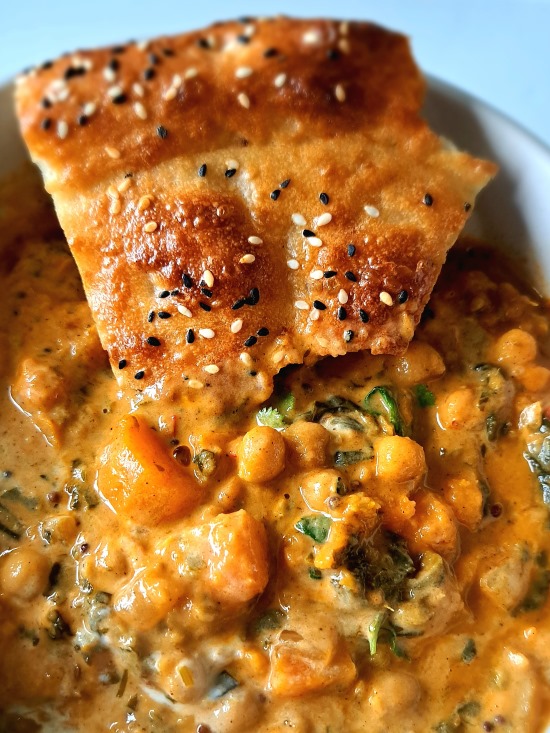
With the resemblance to focaccia, I’ve found it makes great chunky sandwiches too. Try it split and stuffed with cured meats, salads, and preserved vegetables. Or, for a Sicilian inspired twist, I spread the insides with a mix of chopped sundried tomato, garlic, basil, oregano, capers, and chilli flakes, then add slices of cheese. Gorgeous warmed up until the cheese melts.
Once you’ve baked Ramazan Pidesi a few times, try some variations. You could substitute some or all the water with milk for a richer flavour, make two smaller breads instead of one large, or experiment with different glazes.
If you’ve made this simple but addictive Turkish pide flatbread, I’d love to know what you thought. Please leave a comment and rating.

Turkish Pide Flatbread (Ramazan Pidesi)
This beautiful but easy focaccia-like bread is soft, light, and with an open textured crumb.
Made with a simple no-knead dough, you'll want to make it again and again to accompany meze dishes like hummus, to eat alongside soups, stews and meats, or even use it for sensational sandwiches.
Makes one large round loaf but you could divide the dough and make two smaller if preferred.
It's recommended that you read the accompanying blog post before starting the recipe.
Ingredients
- 500 g strong white bread flour (plus extra for sprinkling)
- 2 tsp salt
- 2 tsp instant yeast (i.e. the type that can be added directly to flour without being activated first)
- 2 tsp sugar
- 300 - 350 ml warm water (see Recipe Notes)
- olive oil (for greasing)
Topping (egg and yogurt can be replaced with more olive oil if preferred)
- 1 small egg
- 1 heaped tsp full fat yogurt (optional)
- 1 rounded tsp white sesame seeds
- 1 rounded tsp nigella seeds
Instructions
-
Make the dough (see Recipe Notes for an overnight version)
Put the flour, salt, yeast, and sugar in a large bowl and stir together.
Pour in 200 ml of the warm water and begin stirring to form a dough. Gradually add more water (you may not need it all) to create a wettish, shaggy, but not sloppy dough: see image in the blog post for how it should look.
Cover and leave in a warm place until bubbly and roughly doubled in size (approx. 45 - 90 min).
-
Stretch and fold the dough
With slightly wet hands, stretch and fold the dough by lifting up the top edge (think of it as 'north') then folding it into the middle. Repeat with the 'east', 'south' and 'west' sides.
Repeat the process twice more to get a plump, relatively round piece of dough.
-
Shape the dough
Put a large piece of baking paper on a tray, board or similar (this will help you transfer the dough to the baking sheet later) and sprinkle flour over it.
Scrape the dough onto the floured paper, cover with the upturned bowl and leave to rest for 5 minutes.
Dip your fingers in olive oil and rub them over the top of the dough. Now start to pat it out into a circle 28 - 30 cm in diameter. If the dough springs back a lot, leave it to relax a little longer then try again.
Ensure the top of the dough has a coating of olive oil then cover with a piece of cling film. Set aside until a finger pushed into the dough leaves an indent rather than immediately springing back (30 - 45 minutes approx.).
Meanwhile: preheat the oven to 220°C /200°Fan /Gas 7 /425°F with a 30 cm round baking tray on the middle shelf.
-
Add the glaze and pattern (see blog images for the pattern you're aiming for)
Crack the egg into a small bowl, along with the yogurt if using, and whisk together. Brush a layer all over the dough. (Alternatively, just brush with more olive oil).
Using the tips of two or three fingers, make indents in a circle all around the dough a few centimetres in from the edge: press all the way down to the bottom of the dough without going through it.
Now make a series of straight lines from one side of the circle to the other.
Give the tray/board a quarter turn, then make another series of lines crossing the first to create a diamond pattern.
-
Bake
Sprinkle the sesame and nigella seeds over the dough.
Remove the preheated baking tray from the oven and carefully slide the bread, still on its paper, onto the hot tray.
Put in the oven and bake for 15 minutes.
After 15 minutes, reduce the temperature to 180°C /160°Fan /Gas 4 /350°F and take the tray and bread out.
Discard the tray and paper then return the bread to the oven, placing it directly on the oven shelf. Bake until cooked all the way through (it should sound hollow when tapped underneath): 5 - 10 minutes.
-
When done, transfer the bread to a wire rack, covered with a cloth for a soft exterior, and cool until just a little warm before eating.
Best eaten on the day of making, but can be warmed and refreshed either in an air fryer, moderate oven (sprinkle with water first) or a few seconds in a microwave.
Can also be frozen and reheated as above.
Recipe Notes
Warm water. Ideally, the temperature of the water should be 38 degrees Centigrade. If you don't have a food thermometer then the water should be pleasantly warm if you put a finger in it, not hot. If in doubt, err on the side of cooler: the dough will take longer to rise, but hot water will kill the yeast. For a richer flavour, you can replace some or all the water with milk.
Overnight dough. Making dough the night before baking can develop more flavour in your breads. For Ramazan Pidesi, make as per the instructions but use cold liquid instead of warm. You can also reduce the yeast to 1 tsp and also leave out the sugar if you wish. Cover, leave at room temperature overnight or for 12 - 14 hours, then proceed with the recipe from step 2.
MORE BREAD RECIPES

